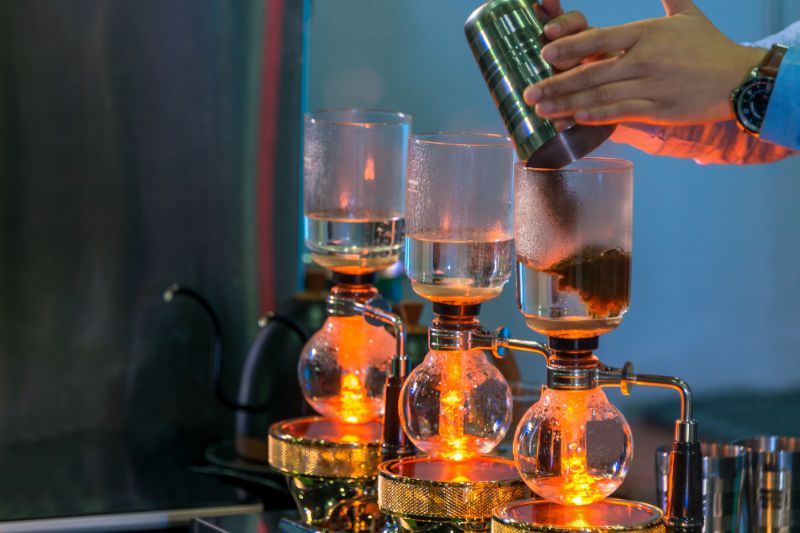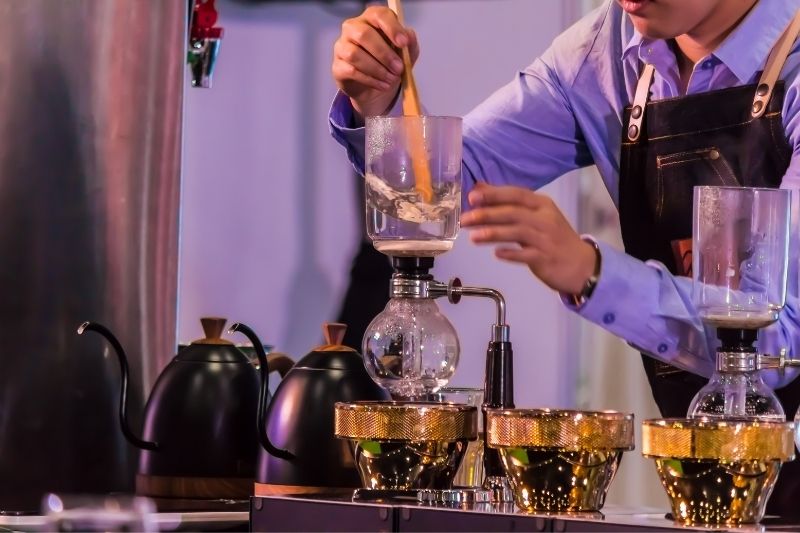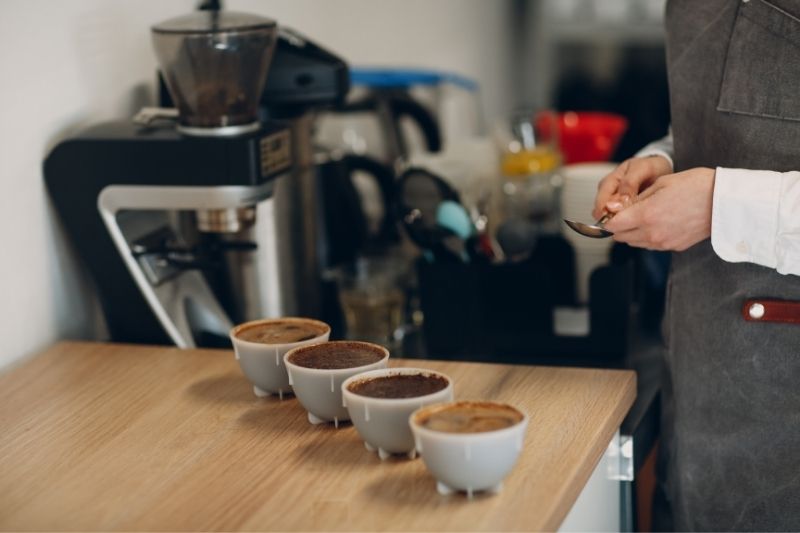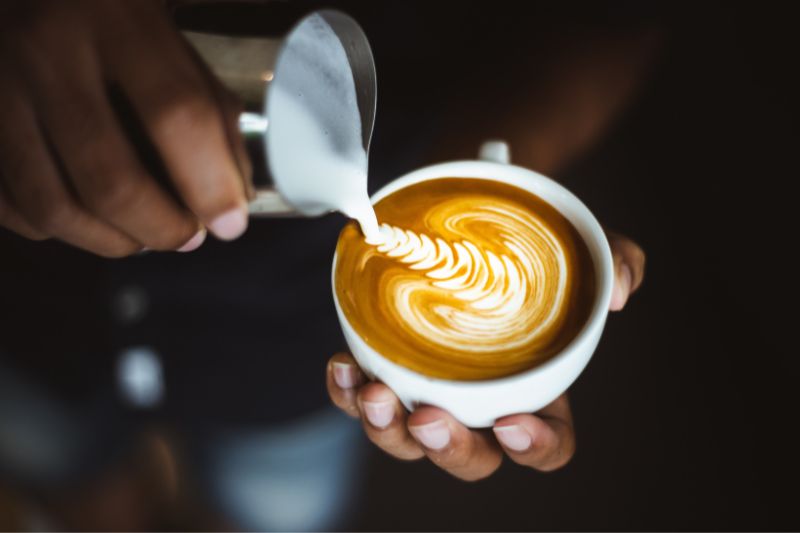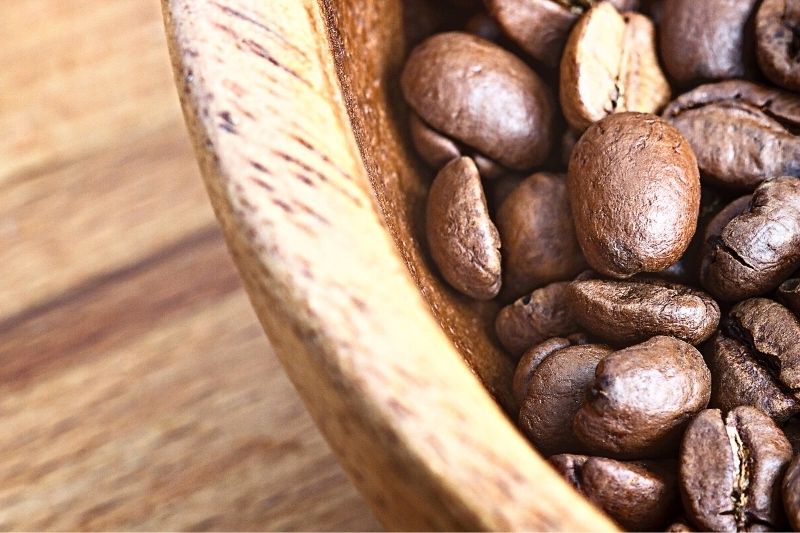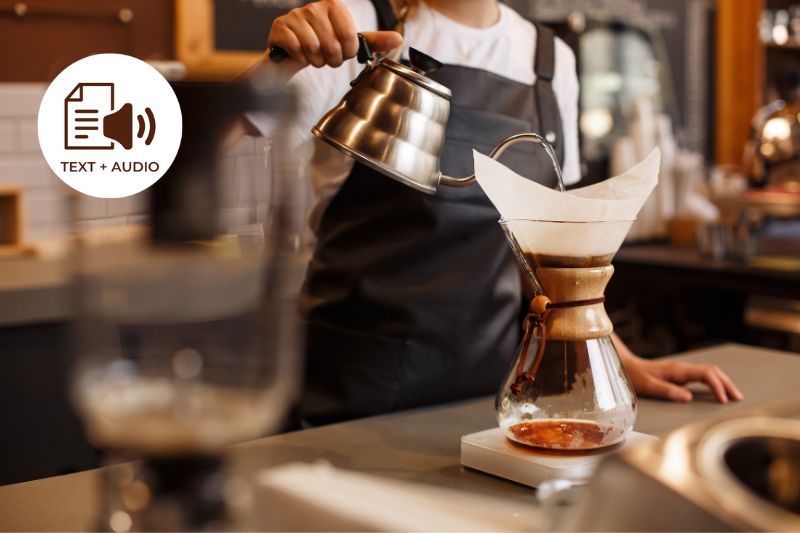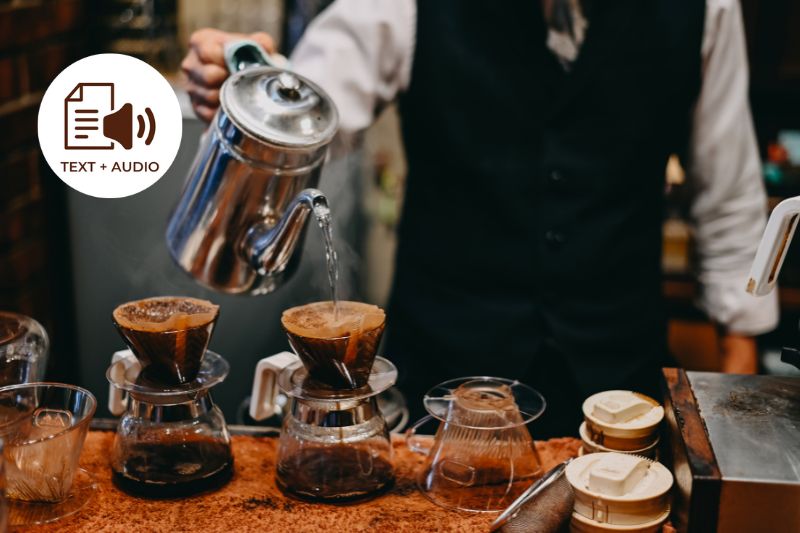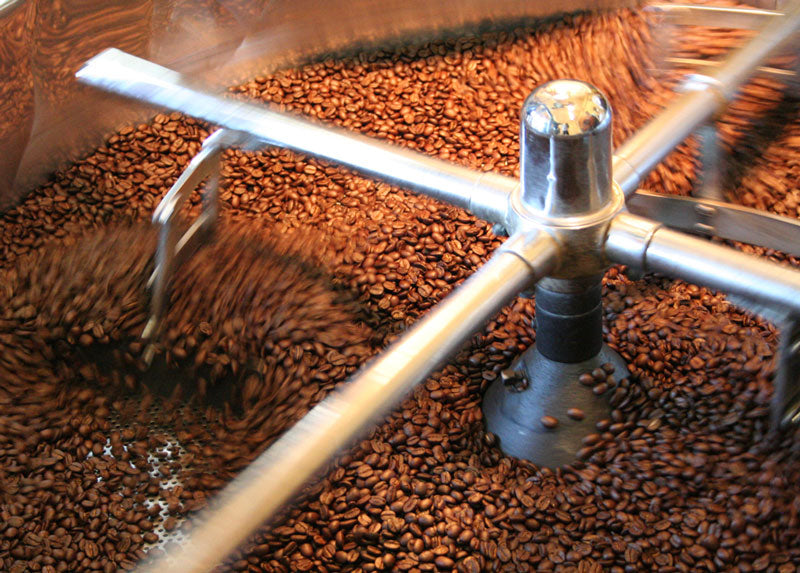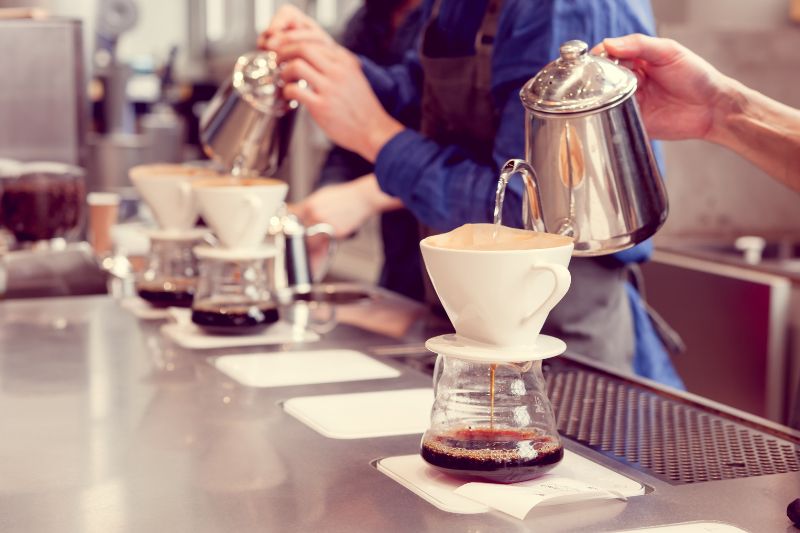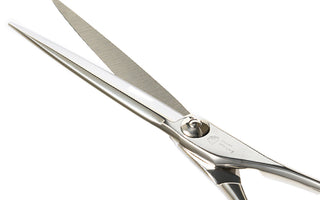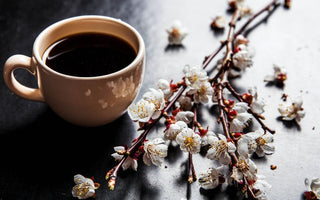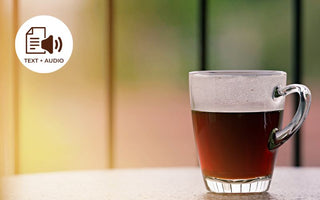Introduction
People have been competing in all kinds of ways and for many different prizes since the beginning of our species.
Whether in the form of a game, like football or baseball, or in a more competitive way, like MasterChef or racing, enthusiasts of all different sports and activities have been watching to see who comes out with a trophy in hand.
Coffee lovers could definitely not miss out on that pursuit of excellence, and so, at the end of the 20th century, Coffee Championships started being held in multiple countries.

In 2000, the largest of these competitions, the first World Barista Championship emerged in Monte Carlo, but it came with an intriguing twist.
It would only accept participants that won last year’s Barista Championship in their respective homeland, each representing their place of origin.
And this gave that much more meaning to winning a national Barista Championship. Once you did, you could now compete against the world.
Today I would like to talk to you about one of my favourite Cups. We are going on a short trip to my hometown and the land of the cherry blossoms!!
What is the JBC?
Japan’s Barista Championship, also known as the JBC, is a national competition held annually by the Japanese Specialty Coffee Association since 2002.
For anyone who might not be very accustomed to the organization, I will link a thorough post about it right here.
In short, it is a community that spreads knowledge and seeks progress in coffee-related matters. It has been operating on a domestic scale since 1987, under the name “Gourmet Coffee Association of Japan”, which changed 12 years after.

Now back to the JBC!
The competitors are evaluated on the basis of “espresso”, preparing 3 kinds of coffees in 15 minutes. They are also given extra time to set up their counter, prepare their ingredients and after the competition, clean-up.
These 3 kinds are one Espresso, a Milk Beverage and a Signature Drink without the use of alcohol.
There are four judges, so the competitors have to make 12 drinks in total, upon which they are evaluated. Any additional seconds to prepare the beverages are penalized (1 point/per second) and a delay of 1 minute or more means disqualification.
The winner of the competition, as mentioned above, gets the privilege of representing Japan in the World Barista Championship, the largest coffee event worldwide.
About the competition
The rules change every year, as the JBC abides by the regulations of the World Barista Championship, which makes slight alterations to the evaluation and scoring sheets annually.
It doesn’t make any significant changes that would substantially impact the results, it’s more like a fine-tuning to make it as balanced a competition as possible.
This is also the reason there are two kinds of scoring sheets. One for the 4 sensory judges who will be served the drinks, and one for the technical judges who measure the participant’s technical proficiency.
The number of technical judges is also not a solid number, but something that changes depending on the year. It’s usually one or two people.

There is one more judge, who gets no scoring sheet and simply oversees the entire process.
The competitor’s total time, with preparation, competition and clean-up included, is not stable over the years, usually it’s around 44 minutes, but the main competing duration of 15 minutes has always been the same.
The participants can also bring their own equipment and coffee to prepare and there is no strict regulation other than avoiding using alcohol in the Signature drink.
Evaluation criteria
Evaluation in JBC, like in the World Championship, is done on a 0-6 scale, with 0 meaning “Unacceptable” and 6 indicating “Extraordinary” and the judges are also allowed to give half-points making the scale 0, 0.5, 1, …, 5.5, 6.
There are also Yes or No questions on the sheets that count as a single point but still play an integral part in the total score due to their quantity. There are quite a few of them and in many cases, finalists compete over a single point. (In case of a draw in the total score, the “espresso” evaluation will be used to define the winner)
Technical Evaluation
From a technical aspect, everything from the tamping of the coffee to the cleaning of the working surfaces is checked and noted.
This includes all kinds of microdetails, like the cleaning of the steam wand in the Milk beverage, or the fast response in case of spillage, and it has to do with the professionalism of the participant.
Overall, technical evaluation boils down to how the Barista would operate in a “real customer” situation. It is a competition of proficiency as a whole in the end!
Sensory Evaluation for each drink
In terms of Sensory evaluation, the scoring sheet looks much different.
For each of the three drinks, the only consistent criterium is flavour!
The Espresso is a 1-ounce cup, evaluated for its “crema” on the surface, and its tactile, which is basically the mouthfeel.
The balance of the traits is also graded, and it should be noted that the gravity of each criterium is different with x2, x3 and x4 multipliers on the score sheet depending on the aspect. (Flavour in all drinks comes with a x2 multiplier)
Next is the Milk Beverage, which on top of the flavour, only evaluates visual correctness, and taste balance. The purpose is to achieve a great relationship between the espresso and the steamed milk, and normally this doesn’t exceed 240ml.
Latte Art on top of the Beverage is not necessary, but it does make a nice impression and counts as a plus.
Last is the Signature, which is the main reason why many aspiring professionals, as well as everyday coffee enthusiasts watch the Championship in the first place.
In the Signature Beverage, presentation and explanation of the drink, as well as creativity and synergy in the coffee are all major factors impacting the judges’ decisions.
The drink must not only be an original of the participant but should also work in a real-life situation with everyday customers.
It should be structured with the taste of espresso as its foundation and the goal is to highlight aspects of that taste without ruining the balance.
It can be served with something edible, and the Barista can request for the judges to enjoy it in a certain way. The only restriction is that alcohol is not allowed.
Overall Evaluation
After the drinks themselves of course, the judges evaluate the Barista himself for his presentation, apparel, and attention to detail.
Fifteen minutes doesn’t sound like much, but it’s more than enough for a professional to make a solid presentation and prepare some admirable results as well.
The last criterium is the overall impression the participant makes, and it has a x4 multiplier, the highest in the Championship!
Participation
To participate in JBC, compared to the conditions of the WBC, the required process is far from strict.
One should have the Japanese nationality and they should have accumulated at least 60 days of work experience in one of the several registered stores.
On many occasions, even students participate in the qualification tournament, if they have a sufficient knowledge foundation of barista techniques.
Yoshikazu Iwase: Japan’s Two-Time Barista Champion https://t.co/5CvEgX7tzR pic.twitter.com/1pYKBmDU85
— Craft Coffee News! (@craftcoffeenews) November 4, 2015
World Class Signature
The most spectacular part of the competition, and the true reason why so many coffee enthusiasts desire to watch the national Barista Championships and the World Cup as a consequence, is without a shred of doubt the Signature drinks.
And the Signatures of Japan have been what one could call “Calligraphy in a Cup” up to now. Let’s look through some of the more ingenious creations, the victors of the JBC showed the world!
What was that which made them stand out?
Hidenori Izaki
First one, I believe you are going to love Hidenori Izaki’s ingenious invention, that gave him the World Cup in 2014. After ranking 13th in 2013’s WBC (2 times consecutive winner of the JBC), he put together a signature drink that from bean to cup, is full of expectations.
This drink is a complex combination of unusual ingredients, each with a purpose to further enhance the drinker’s experience.
It starts with a shot of his “espresso” coffee, a Costa Rican “honey processed” Typica, co-produced by him, exclusively meant for Espresso. Next it takes a shot of his “Milk Beverage” coffee, a Red Caturra species, and after extracting, lets both of them cool down to the side.
After 10 minutes, when he has finished preparing the Espressos and Milk Beverages, he returns to add a few final touches.
Pairing the first with apple syrup and the second with peach nectar, and reheating for a few moments, -As he stated in the tournament, each of the ingredients meant to highlight a specific set of individual coffee traits- he serves the mix over Iced Spheres in Cocktail Glasses.
The judges loved it, and taking his impeccable presentation into account as well, the first place was his!
Miki Suzuki
The next champion of Japan that took my breath away is undeniably Miki Suzuki. After nearly 10 years of experience in the coffee industry, and 3 JBC victories in the past, this Barista reached second place in 2017’s WBC with her mind-blowing signature cup.
It is worth mentioning that in all 3 of her World Championship Performances, she reached the top 5 finalists, each time with a different idea.
Her inspired creation for 2017 begins with Washed Geisha “Alacitas” Beans from Bolivia, that brings together a fruity guava taste, with hints of wine and lavender.
However, even after months of experimentation, Miki still wasn’t satisfied with the result. As she said in an interview, after extraction, a lot of undesirable flavours remained in the cup messing with the balance.
So she got creative. She decided to freeze the beans before grinding them and it worked! Well, almost. While it did get rid of certain imbalances, the end result was still not optimal for our finalist.
So another unusual but very intelligent idea popped up after some experiments. Let’s see if we can grind it one more time…
And this was the thing she was looking for! The taste was on another level and our finalist stated that she was completely satisfied with her performance in that Championship. Her Signature is known as “The Double Grind”.
Yoshikazu Iwase
In 2016, we saw another Barista who, like Hidenori Izaki, had won last year’s domestic Championship, but hadn’t reached a rank that would satisfy him in the WBC.
Yoshikazu Iwase had reached the 7th place in 2015’s World Championship, but as he mentioned in an interview, this was far from satisfactory for him.
And after a year of rigorous training, he won the national Cup again, but this time rose to the 2nd place, on a world scale. And one of the most important reasons was of course his Signature beverage.
Although his Signature followed the “Ice Sphere and Cocktail Glass” pattern, it did bring out a lot of new things to the table.
For starters, it utilized Geisha coffee -for those who don’t know it’s the highest quality of coffee varieties worldwide- from both Panama and Ethiopia, in a 65% - 35% ratio respectively.
He spoke of combining the original flavours of the variety (Ethiopia), with its most successful progression (Panama), each with its own unique characteristics.
A lot of emphasis was put on the different processing methods used for each of the two kinds, to bring out their individual strong suits.
After that, he added a “Geisha honey syrup” he infused himself, and some passion fruit syrup, to invoke the taste he wanted from the cup.
Just at the nick of time, he reached to serve his drink and left with a silver medal around his neck!!
Other Domestic Coffee-related Championships
Unsurprisingly for a country with such deep love for great coffee, the Japanese Specialty Coffee Association is supporting several other coffee-related Championships as well.
For example, there is the Japan Siphonist Championship which is the “Siphon coffee” equivalent of JBC.
There is the Japan Latte Art Championship that began in 2008, when the Japanese representative in JBC ranked third place worldwide, with his Latte art.
And of course, there is the most complex, coffee-brewing tournament, the Japan Hand-Drip Championship. This one has a lot more technical knowledge and practice required, as the Hand-Drip is a very hard brewing method to master, but the results are just as stunning as those of the JBC.
Conclusion
There are undoubtedly many kinds of different competitions one can watch, depending on their tastes.
Martial arts, football, baseball, they are all incredible sports. But I doubt you will find any competition like the JBC.
It’s not that the other sports lack something. It’s just that… there is something special with making a true “Cup of Excellence”. The Signature drinks mentioned above have done more than just prove that.
I suggest for every coffee lover reading this, to watch it at least once!
Here are some videos related to Japan Barista Championship
Get Free Bonus Book


